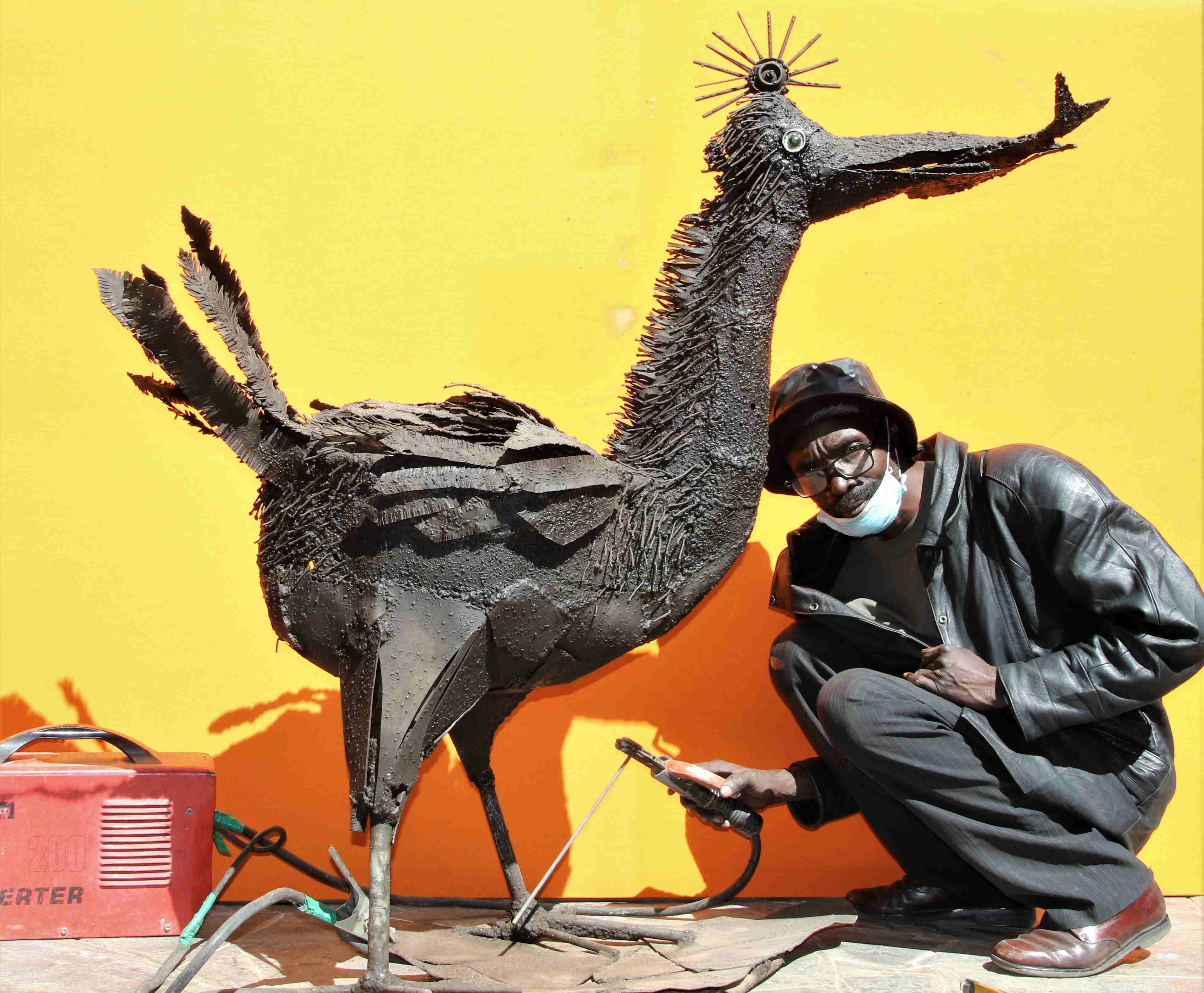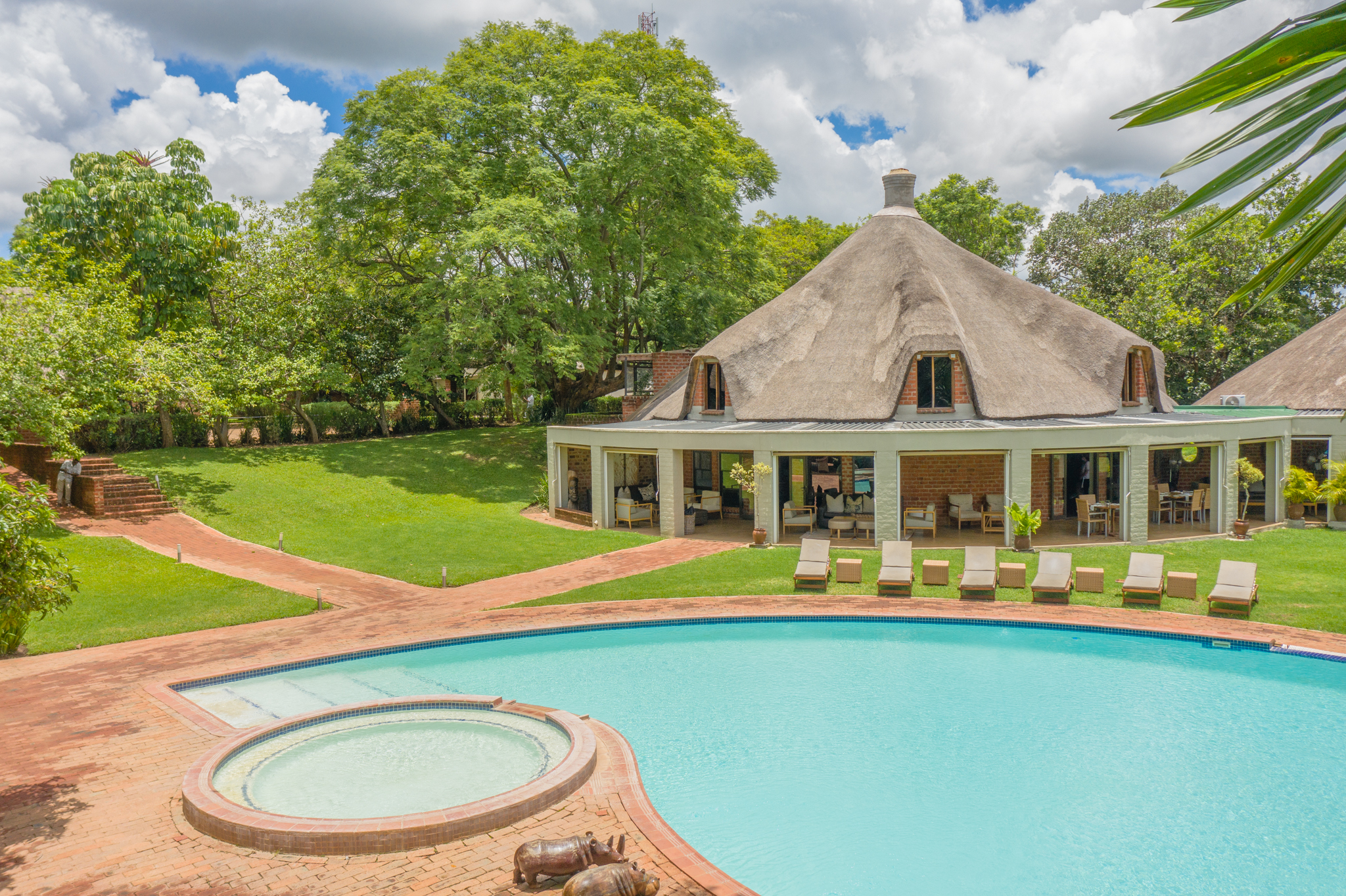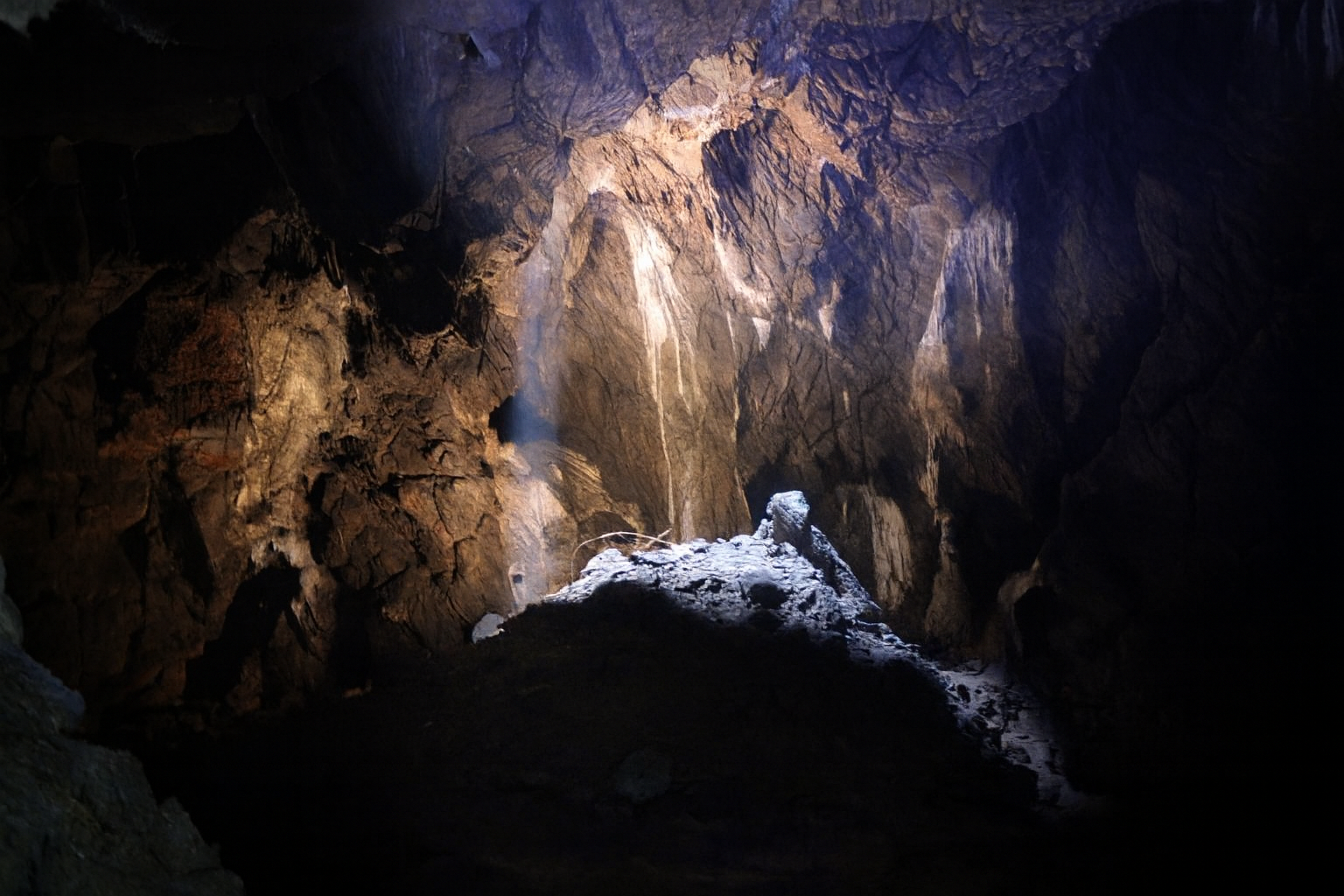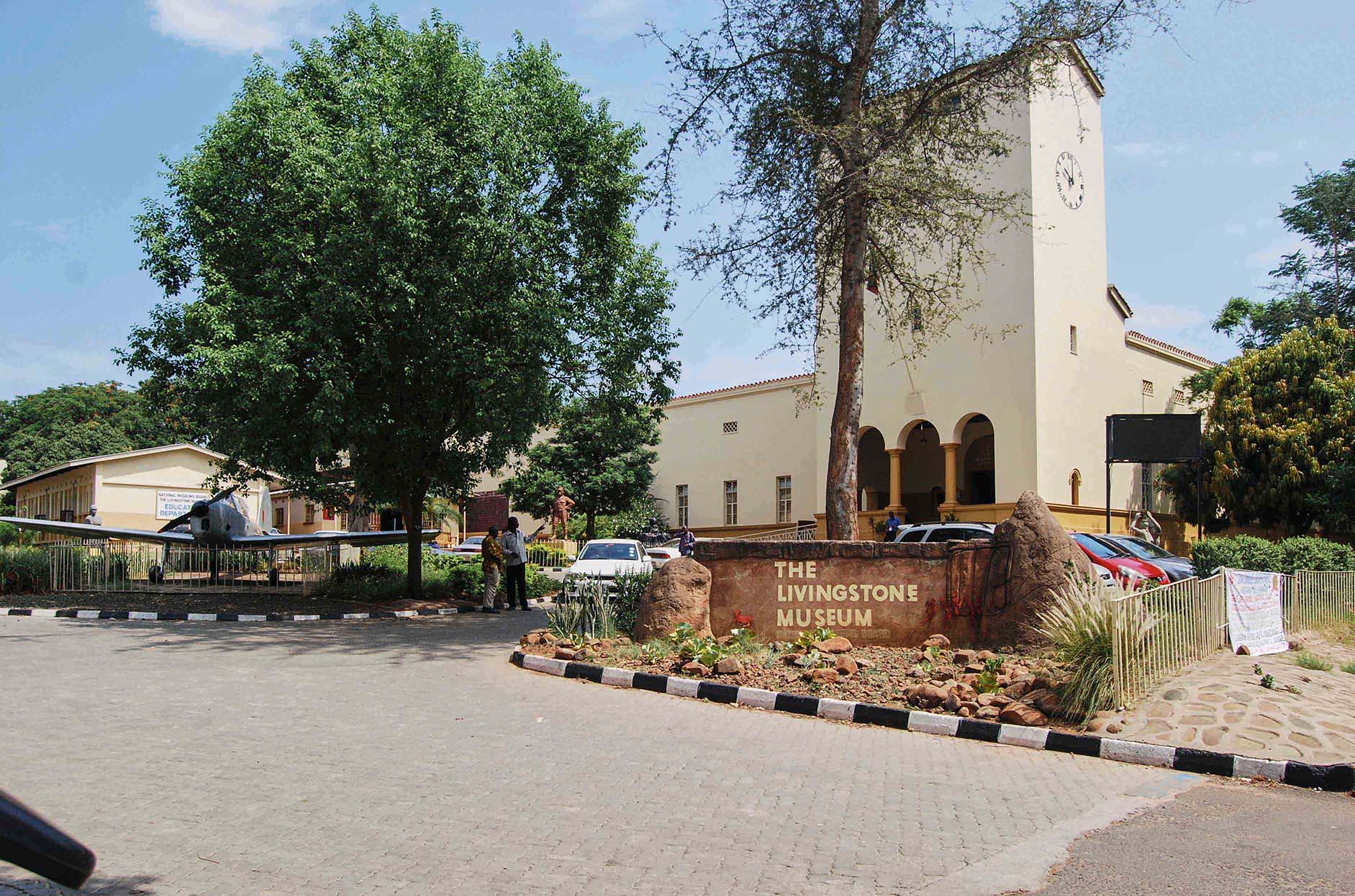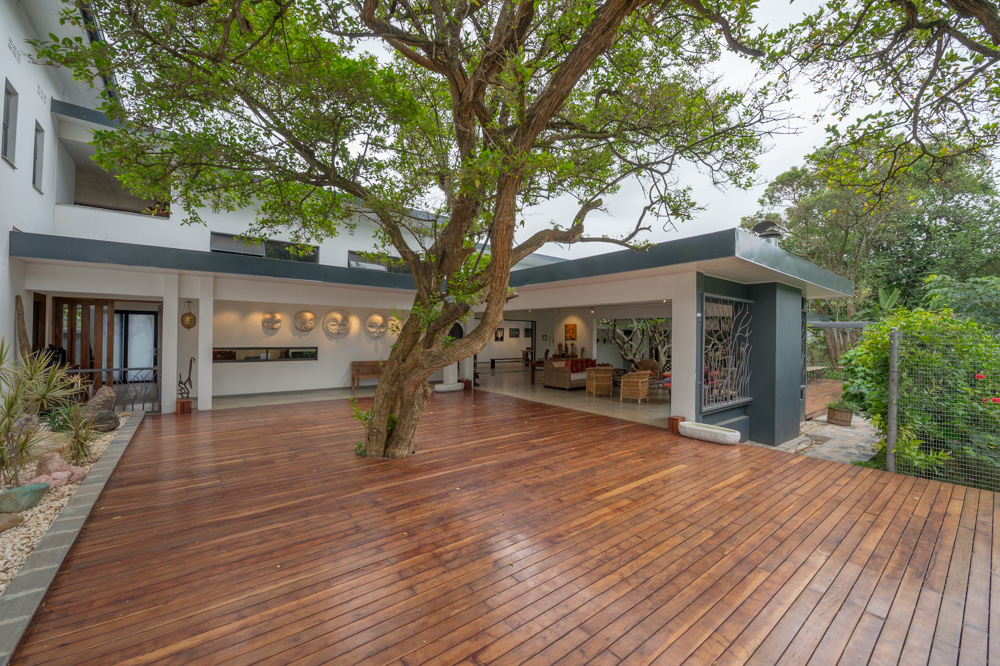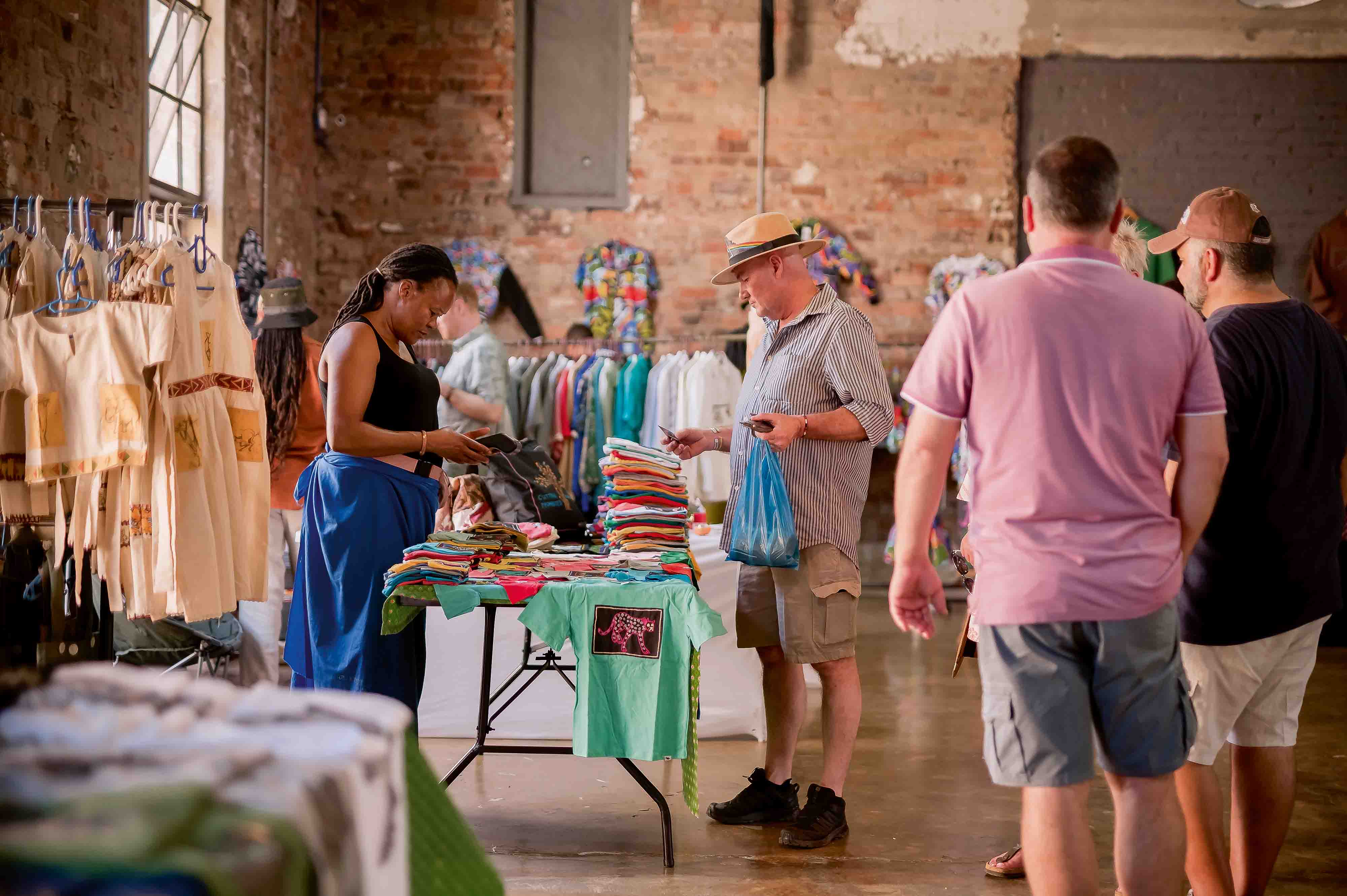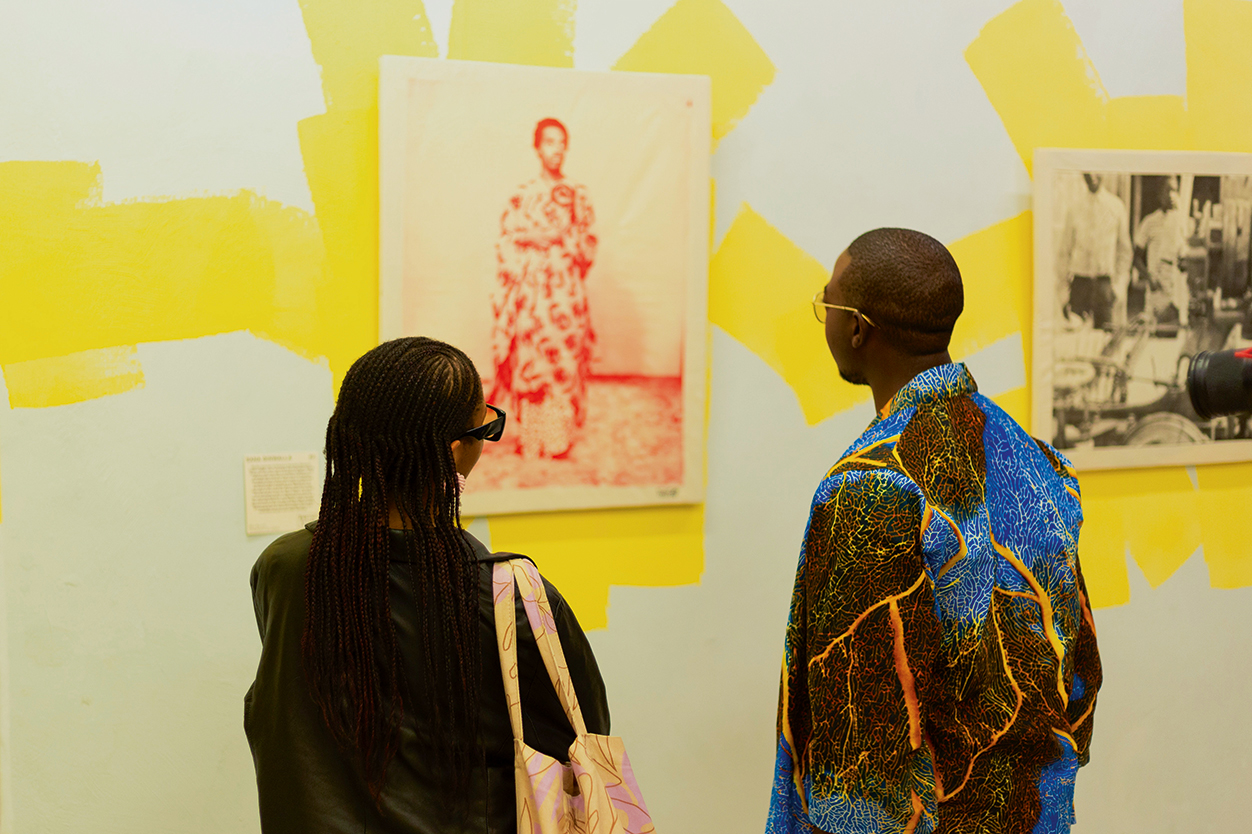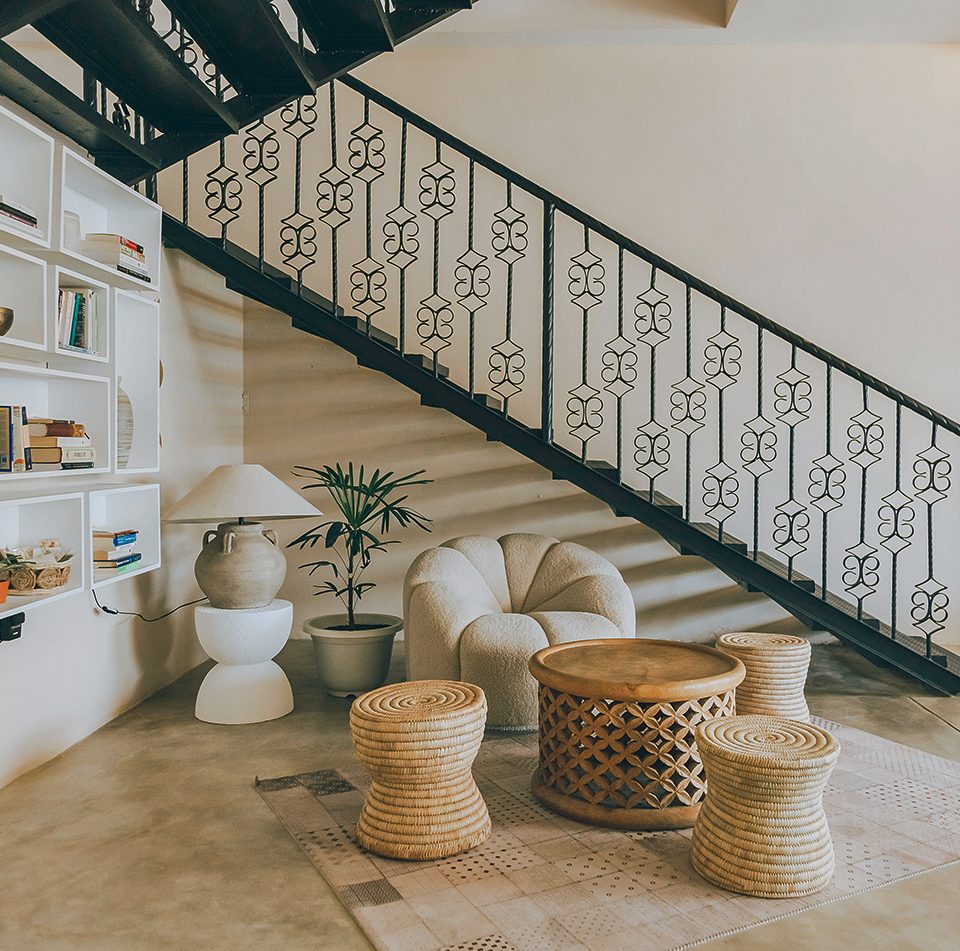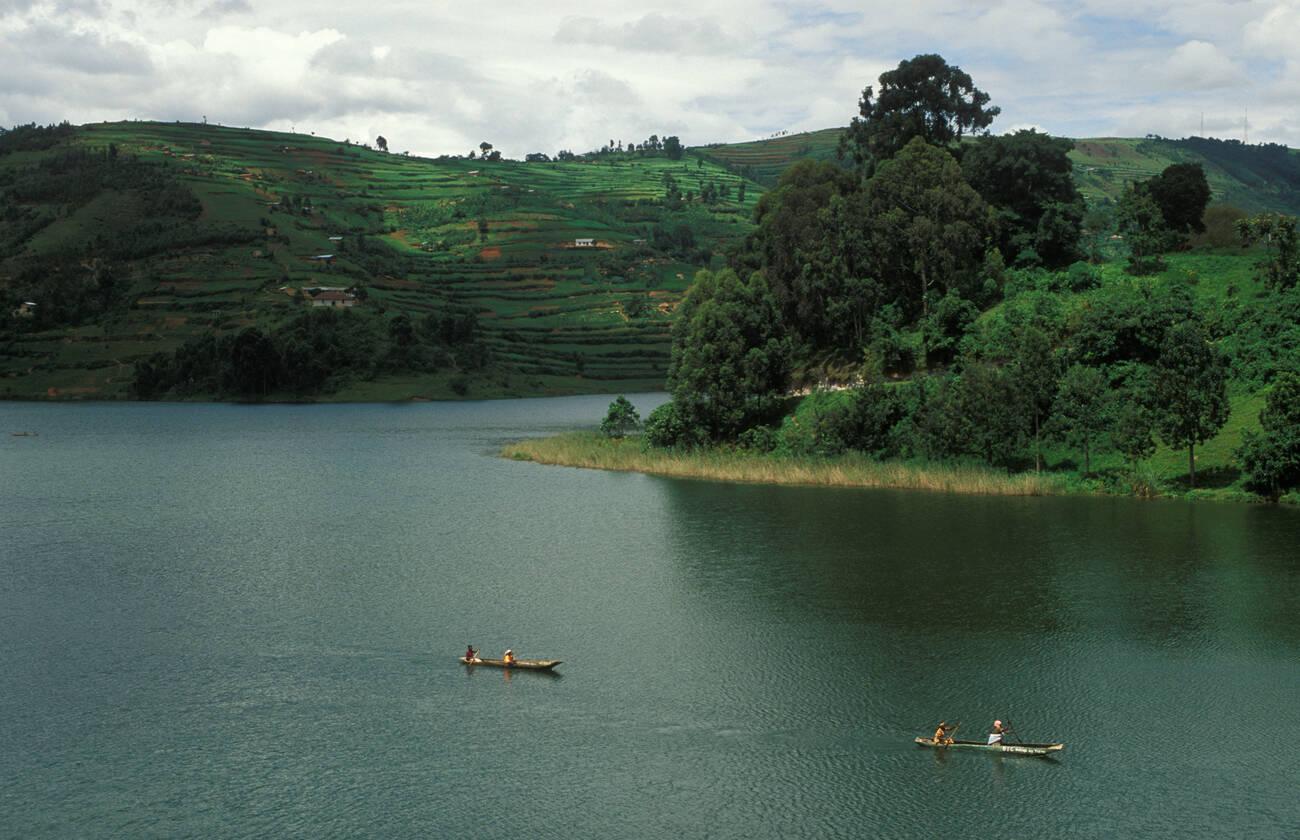Lusaka’s Showgrounds holds one of the city’s most surprising secrets. Hidden between industrial and commercial enterprises is a treasure trove of talented sculptors; working and exhibiting world class art pieces, mostly from recycled metal. Climate change, conservation, scarcity of natural resources and a great love of the country’s culture and history inspire the city’s sculptors.
Way back in 1989 Zambian artists came together and founded the Visual Arts Council (VAC) to promote visual arts and the development of artists in the country. Since then VAC has striven to create a safe place where artists can work, develop their talents and exhibit. The Henry Tayali Art Gallery on Lion Lane in Showgrounds is the heart and home of this talented group of sculptors.

The gallery is named after late Henry Tayali, a prominent Zambian artist, whose dynamic works gained international recognition. Many prominent artists started their careers through VAC but this story is not about the well-known ones; it is about several undiscovered geniuses. Their work is fresh and honest and will compliment any home or office.
Just a few hundred meters up the road from Henry Tayali Gallery are the artists’ workshops. Here a dozen or more artists work in stone, rusted metal, soft and hardwood. The workshop space is another brainchild of VAC, providing secure workspace for artists. They are free to come and go, work at their own pace, create and, also receive gallery space to exhibit.

Kingsley Kapobe has soft eyes and a big heart. At nine years old, Kingsley started his art career by doing wedding invitations for brides on the Copperbelt. His first love is ceramics but he could not afford the operating costs of a kiln and oven. When a ceramics study opportunity to China fell through, he turned to sculpture. He now works with recycled metal, concrete and wood and produces practical utensils, furniture and exquisite art pieces. He notices my interest in the work of a mute colleague and comes over to help. Kingsley’s younger brother was born deaf and he taught himself sign-language, he explains as he introduces the gentle giant, Donny Blessmore Kaseke.
Donny does not need sounds or words. He communicates through his life-size art works. Back home in Zimbabwe his loving mother and sisters taught him to use his lack of hearing to look at the world with a discerning eye. He consequently developed the rare gift of observation. Donny looks at the world and its ways with an engaging sense of humour and tells the stories of everyday people. He works predominantly in metal and replicates the daily comings and goings of people on their way to work, school, the shop.

Although the figures are central to his sculptures, it is only when one looks at the details that they come to life. A schoolgirl – satchel on the back, book in hand – walks to school reading. By using something as simple as a book he sketches the hunger for education among the country’s youth. At first sight a man on his bicycle doesn’t stir up much thought. But the story is in the detail of the bike: the reflectors, the spikes and the old-fashioned suitcases strapped to the saddle. Happily cycling, he carries his earthly goods with him. Is he going home after a long stint away at the mines? Is he leaving the village to find a better life?
Emmanuel Kapotwe’s work is in stark contrast with Donny’s work, more serious in nature. The urgency to stop climate change is reflected in his paintings and sculptures. I meet him bringing the finishing touches to a huge metal sculpture of one of Eastern and Southern Africa’s endangered birds, the crested crane.
Smart Banda is the philosopher of the group. He guides me through his creations, depicting mostly groups of people: three musicians created from recycled car parts, twins set in stone, a married couple in marble. ‘Why groups?’ I ask. A soft smile lights up his lined face. “We are humans. We must communicate not only with words, but also by caring for the other.” Smart loves stone and has an uncanny ability to change hard raw materials into objects, soft and cool to the touch.
Why are there so many excellent sculptors specifically in Lusaka, as opposed to other African cities? I asked several sculptors over many visits. I get many answers.
“There are many materials available: wood, marble, metal,” one sculptor comments.
Someone else asserts that VAC is to be thanked as the organisation offers workspace, workshops and exhibition space; thus, enabling the struggling artists
A determining factor not to be underestimated, says another, is that sculpture is part of the African cultural heritage. Traditional African art – masks, ancestral figures, drums and music instruments – are treasured by art lovers, galleries and the world’s most prominent art museums. Most importantly though, homemade utensils – cooking pots, clay water and beer pots, woven ware, pestles and mortars – are part and parcel of the Zambian household. In every village there was a talented artisan who produced three-dimensional utensils for the village households. It is an inborn ability to create in different dimensions.
Picasso once said: “Sculpture is the art of intelligence.” To create even the simplest kitchen utensil the artist must consider line, colour, shape, form, space, texture and, most importantly, functionality. This requires real intelligence and artistic excellence.
Colonial education is often criticised for ignoring Africa’s inherent technological skills. Education during colonial times concentrated on literacy, while Africa had its own technological knowledge basis – sculptors, weavers, blacksmiths, miners, among others – who catered to the specific needs of communities.
Visitors, business travellers or tourists who want to take back something – other than generic touristy artefacts – can find it right in central Lusaka. At Henry Tayali Gallery valuable art can be bought at reasonable prices; with the additional bonus of meeting the artists face to face. Zambian artists love to work big: maybe it reflects the country’s open spaces, maybe it tells of big hearts and souls. If you fall in love with such a real statement piece, do not worry. It will be packed and shipped to any place in the world.
Rest assured, it will be an investment in art and beauty that will sit proudly in any home.
